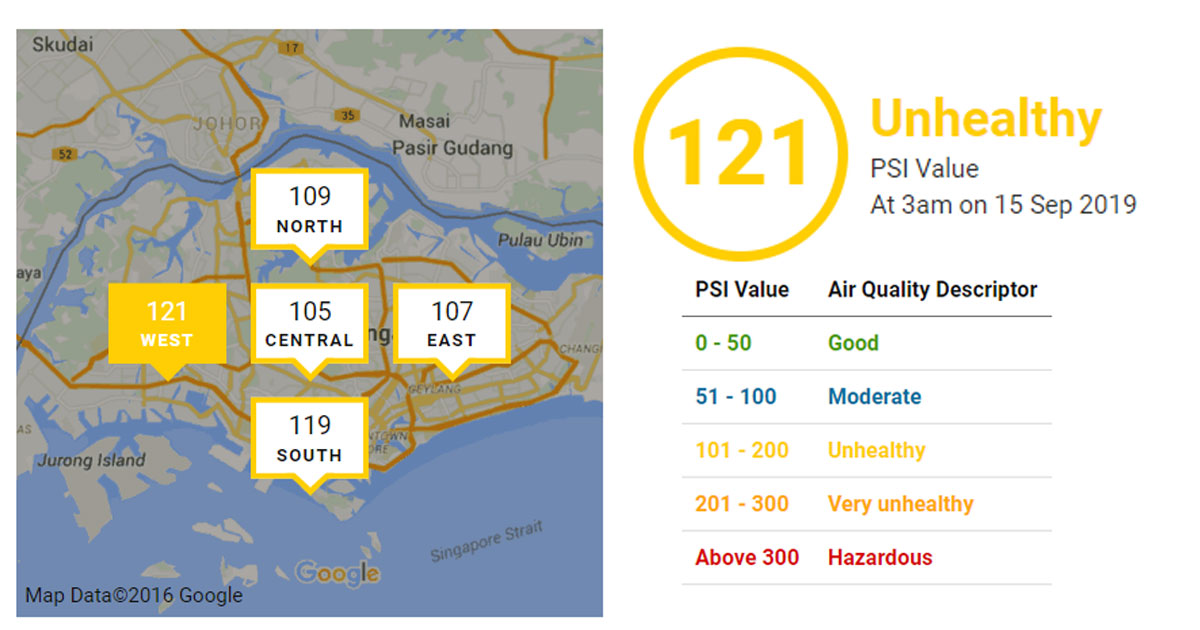The Pollutant Standards Index (PSI) crossed the 100 level into the unhealthy range at 4pm on Saturday, Sep. 14, 2019.
This was the first time since August 2016 that the 24-hour PSI reading has reached this level.
The last time the PSI breached the 100 mark in Singapore was on Aug 29, 2016, when the 24-hour reading hit 109 in the north.
At 3am on Sunday, Sep. 15, the PSI worsened with the west hitting 121.
Breakdown of Satuday's PSI level
Saturday, Sep. 14, 2019:
As of 5pm, the 24-hour PSI reading in various parts of Singapore were, according to severity:
West: 106
South: 98
North: 90
Central: 89
East: 87
PSI readings for air quality indicate:
50 and below: “good”
51-100: “moderate”
101-200: “unhealthy”
One-hour PM2.5 concentration readings at 4pm:
90-158µg/m3
West saw highest levels: 158µg/m3 in Band III (High)
At 5pm, the readings ranged from 77-133µg/m3:
West still saw highest levels: 133µg/m3 in Band II (Elevated).
Why PM2.5 matters
According to NEA, one-hour PM2.5 readings are a "good indicator of current air quality", and can be used for those deciding whether to go for immediate outdoor activities, such as a jog.
PM2.5 is a measure of tiny particles less than 2.5 micrometres in diameter in the air.
When the PM2.5 reading is in the elevated range, haze particles can affect the heart and lungs, especially in people who have chronic heart or lung conditions.
Those with such conditions should ensure that they have their medication on hand, NEA said.
2015 way worse
The worst haze episode in Singapore in recent years was in 2015.
Rampant forest fires in Indonesia then resulted in haze in the region for weeks.
PSI readings in Singapore climbed above the hazardous level of 300, forcing schools to close.
If you like what you read, follow us on Facebook, Instagram, Twitter and Telegram to get the latest updates.
